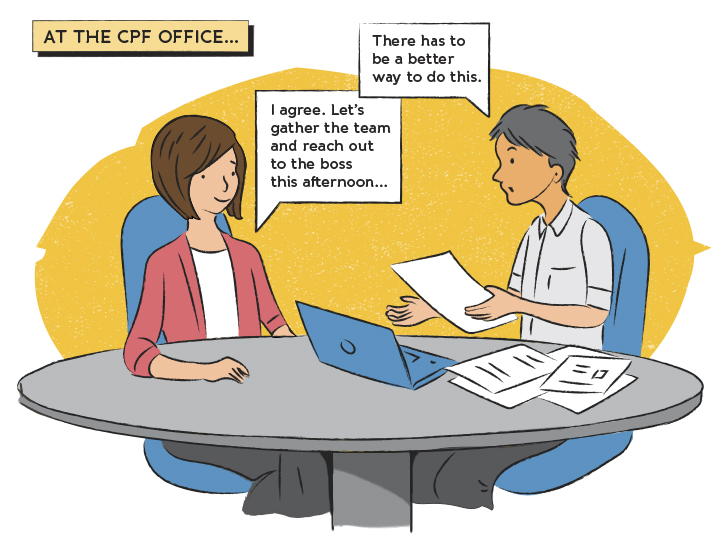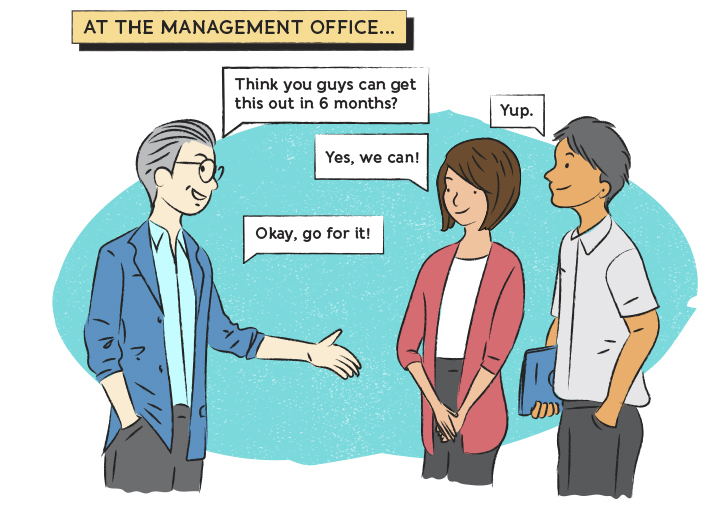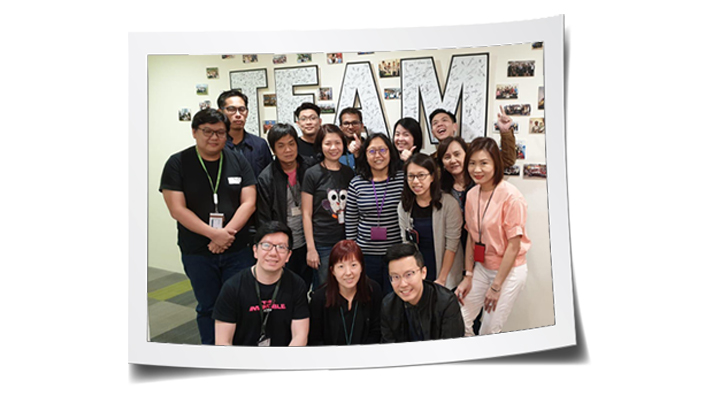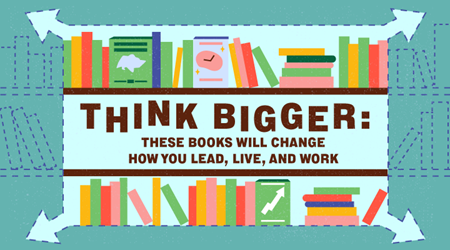How The CPF Board Made CPF Nominations Digital

Death and taxes may be the only constants in life, but paper forms don’t have to be.
Some traditional processes require not only pen-and-paper forms, but also witnesses to verify the intent of those signing the forms. Think wills and insurance nominations.
Making Central Provident Fund (CPF) nominations also used to require having two witnesses present. The cumbersome process put off many from making nominations. At the same time, the volume of hardcopy forms was becoming difficult for the CPF Board to handle.
Wanting to encourage more CPF nominations, a team from the CPF Board decided to review how the entire process could be more convenient and done entirely online.

Within six months, the team had a new Online Nomination Service, which turned the witnessing process digital via SingPass authentication service.
CPF nominations allow CPF members to specify who will receive their CPF savings, and how much each nominee should receive, upon their demise.
The traditional process: Required the physical presence of two witnesses to attest to and see a CPF member signing the nomination form.
The online process: Replaces the witnessing process with SingPass authentication for two others to attest to the nomination.
The Biggest Hurdle
In 2019, during the team’s research to improve processes, they found no similar digital services such as online wills or insurance nominations in the industry.
Digitalising a legal bequest requiring witnesses was unprecedented, unlike other paper application forms where digital versions are now commonplace.
This meant that with the various stakeholders involved in the project – and even within the CPF Board project team – there was an initial resistance to overhaul the legal bequest process.
They had to overcome mental blocks and perceptions that the traditional form of the witnessing process had to be retained, with witnesses physically present to attest to the signing.
But the team’s belief and desire to digitalise the process to better serve CPF members “helped us to boldly break through these mental barriers”, says Mr Low Pat Chin, Group Director of the Member Accounts and Investment Group, which oversees CPF nominations.
The team rigorously reviewed the conventional witnessing process, and eventually came up with an entirely digital witnessing process – one that did not compromise the witnesses’ role and responsibility, and with the added benefit of greater assurance in ensuring the nomination’s authenticity.

How CPFB Did It
The team had little success in encouraging more CPF members to make nominations. For citizens, the hardcopy process was cumbersome and they had to arrange for two witnesses to be physically present. For CPF officers, the huge volume of paper forms was becoming a challenge to maintain.
Armed with conviction and a proposal, the CPF team set out to convince senior management to depart from the industry tradition and “do better and move faster than the industry”. The team noted the significant resources needed, such as coordinating law changes and IT enhancements across multiple systems.

Not only were the management convinced of the proposal, they were so enthusiastic and supportive of the idea that they challenged the team to roll out the solution in six months.
With management’s help and strong support, the project team quickly assembled key stakeholders to cement the solution that they had conceptualised, and developed a swift implementation plan.

22 core project team members from 6 different departments in the CPF Board.
CPF nominations, legal, IT, user experience and communications.
- The Ministry of Manpower – to conceptualise the solution with the CPF Board.
- The Attorney-General’s Chambers – to ensure that laws were updated to enable online nominations to be lawfully accepted.
- Other departments in the CPF Board – for invaluable feedback.
After CPFB’s management scrutinised the team’s solution and gave the necessary approvals, the Online Nomination Service was launched in six months.

The ABCs of Going Digital
Agile project development: The CPF Board developed a Minimum Viable End Product approach, by reviewing the solution requirements iteratively to cut out non-essential requirements.
Be bold: The short timeline of six months meant the team had no choice but to act boldly. “We took concurrent actions and made conjectures based on our analyses,” says Mr Liang Weirong, Project Lead and Deputy Director of the Withdrawal Schemes Department.
“We would forge ahead first with next-actions, with the hope that management would agree with the team’s analysis and decisions. Thankfully, management agreed with most of the decisions taken,” he adds.
Customer-obsessed: One of CPF Board’s key attributes, says Ms Stephanie Ng, Director of the Withdrawal Schemes Department, is “this obsessive belief in wanting to provide convenience to our customers, the CPF members, which led us to overcome the challenges in this project”.
The Outcome
Greater convenience: An estimated 84,000 hours saved for CPF members annually, as making nominations online cuts the need for transport and waiting time at CPF Service Centres.
More CPF nominations: Since the launch of the Online Nomination Service in January 2020, almost half of all CPF nominations made since then have been made online. Among these, more than 60% were making their first CPF nominations.
Improved productivity: In 2019, the CPF Board received around 134,000 hardcopy nominations. Processing these forms took more than 33,300 man-hours.
With online nominations, where there is no need for manual data entry and a second person to verify the data entry, the team would have taken only 7,400 man-hours to process those nominations – an improved productivity of almost 78%.
These projections are based on the minimum viable end product of the online service, with further productivity gains possible from automating other backend processes.

- POSTED ON
May 20, 2020
- TEXT BY
Tuber
- PHOTOS BY
CPF Board
- ILLUSTRATION BY
mushroomhead









